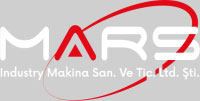CNC Precision Machining: Tight Tolerances, Superior Finish, Repeatable Quality
CNC precision machining delivers micron-level tolerances on metals and engineering plastics using computer-controlled machine tools. Below you’ll find the process steps, equipment, metrology methods, and key cost drivers.
What Is CNC Precision Machining?
CNC (Computer Numerical Control) lathes, mills, and machining centers use G-code to control cutting tools and achieve specified tolerances and surface roughness . The method offers high repeatability, low error margins, and short cycle times.
Machines & Tooling
CNC Turning: OD/ID turning, grooving, threading , tapers.CNC Milling / Machining Centers (3–5 axis): Pockets, slots, profiles, 3D surfaces.Cutting tools: Carbide inserts, coated end mills, hole-making systems.Workholding: Magnetic/vacuum tables, custom fixtures, collet systems.CAM Software: Toolpath optimization, simulation, collision avoidance.
Process Workflow
Data & revision check: STEP/IGES, DWG/DXF, PDF drawing verification.Manufacturing plan: Operation order, tool selection, cutting speeds/feeds.Programming: CAM and/or on-machine G/M codes.First Article Inspection (FAI): Validate critical dimensions and adjust if needed.Production: SPC-backed runs with in-process checks and records.Secondary processes: Heat treatment, anodizing/galvanizing, grinding.Final inspection & shipping: Measurement report and protective packaging.
Quality Control & Metrology
Compliance with GD&T requirements on drawings.
Metrology: Calipers, micrometers, indicators, surface roughness (Ra ), go/no-go gauges.Advanced (optional): CMM/3D scanning, optical comparators.SPC & traceability: Statistical process control on critical features and documented results.
Materials
Steels (S235, C45, 4140), stainless steels (304/316), aluminum (6061/6082/7075), brass/bronze, cast alloys, and engineering plastics like POM, PA6, PTFE .
Cost Drivers
Tolerances & Ra targets: Tighter specs require more operations and time.Geometry complexity: 5-axis work, special fixtures, and tooling may be needed.Material: Hard alloys impact tool life and cycle times.Quantity & lead time: Unit cost differs between prototypes and series production.Secondary processes: Heat treatment/coatings add cost and lead time.
Applications
Automotive, machinery, and automation parts
Medical, food, and chemical process components
Energy and defense industry parts
Molds, fixtures, and tooling
See our services and references , or contact us with your drawings.
FAQ
How tight are your tolerances?
Depending on geometry and verification method, we work to micron-level tolerances. The target tolerance is stated in the quotation and plan.
Do you handle low-volume prototypes?
Yes. Our process is optimized for fast turnaround and consistent quality in small batches.
Can you provide measurement reports?
On request, we deliver FAI/final inspection reports, Ra measurements, and traceability records.


 Türkçe
Türkçe